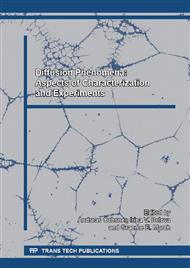p.1
p.10
p.18
p.25
p.34
p.42
p.52
p.60
p.68
Comparative Analysis of the Surface Roughness Parameters due to the Machining Uniformity
Abstract:
In the paper a new method has been proposed for the determining of the very fine machining uniformity over the elaborated surface and could be applied to different machined materials and machining procedures. The proposed methodology is relatively simple and is essentially formulated in the few subsequent steps: taking surface roughness 3D profile accordingly proposed scheme; estimation of the roughness statistical parameters: Rp, Rv, Rt, Ra, Rq, Rskew, Rkurt, and if need be – surface rugosity Ru; calculation of the centroid of the obtained data due to the measurement fields, calculation of the barycentre of the obtained data with the weighting variable chosen for the appropriate evaluation of the surface machining uniformity. As the main Cartesian coordinates of the centroid calculation we propose (Rskew, Rkurt), although other data organization schemes have also been provided as the example solutions. The final evaluation of the surface machining uniformity is based upon the Euclidean distance between the centroid and barycentre of the surface roughness data. The proposed method has been applied to experimental results obtained with the AFM technique used on samples of the polished AZ31 magnesium alloy. The surface machining procedure comprised of four stages performed with using different abrasive media, finally lead to the highest grade of the surface roughness.
Info:
Periodical:
Pages:
25-33
Citation:
Online since:
April 2016
Price:
Сopyright:
© 2016 Trans Tech Publications Ltd. All Rights Reserved
Share:
Citation:


